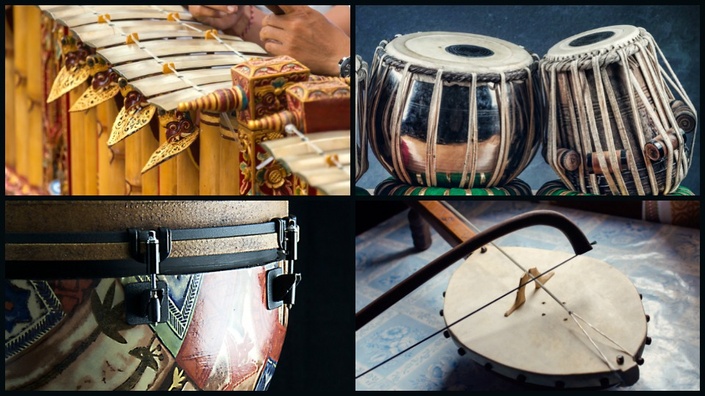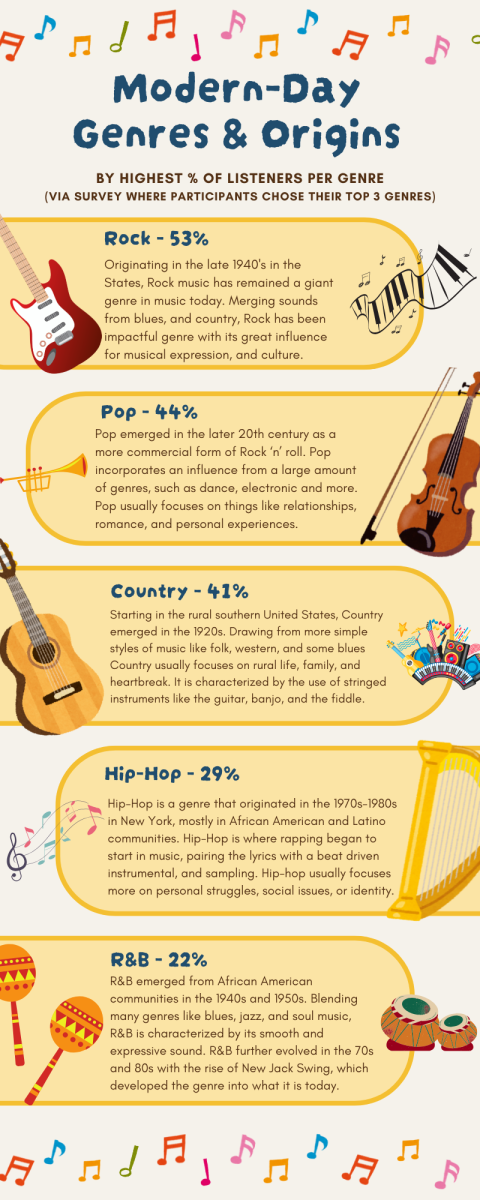The History Of Music Around The World
From primal drums and chants thousands of years ago, to modern day concerts, music is a universal language, ignoring borders, cultures, and even time periods. As Nyttu Chongo, a musician from Mozambique states, “Music is what makes you a human being”. In this article, we’ll take a journey through time to explore the history of music, tracking its evolution and discovering what shaped music into what it is today.
Prehistoric Music
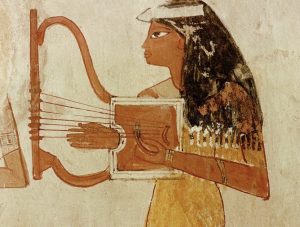
Music is said to have first emerged around 40 thousand years ago. Music during this time looked as simple as banging rocks together, ritualistic chants, or sounds made from other carved instruments made from bone, stone, or sticks. These simple rhythms would carry on to further the development of music.
Ancient Music
After the groundwork was set by the rhythms of the prehistoric music era, empires and civilizations such as Mesopotamia, Egypt, and Greece began to take hold of music. During this era music continued to be important to rituals and ceremonies in forms like chants or banging on drums. Along with this, more sophisticated instruments began to emerge, like the harp, flutes, and some other early stringed instruments. Music theory also began to emerge, with philosophers like Pythagoreas studying the octave scale.
Medieval Music
During the Medieval period of music, music containing polyphony (when two or more instruments are played together) and harmonies had started to be seen and had become more common. Notation, which hadn’t really been a large part of music before, had also become a normal thing for music. The meaning of music and the songs also began to change. Unlike the music from prior eras where music was mostly sacred (religious), secular music made its way into the spotlight, which focused more on telling stories of chivalry and love.
Renaissance Music
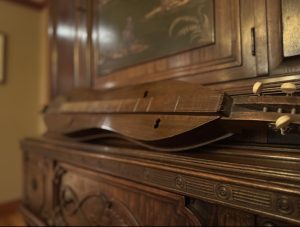
The Renaissance era sparked a change in the way the world and humanity viewed music. Similarly to other aspects of the Renaissance era, music had started to be seen as an art, focusing deeply on emotional depth and clarity in music. With music becoming more refined, composers began to gain recognition and profit for their works and music. Along with the recognition composers gained, Sacred music and Secular music both flourished, with each gaining great recognition in their domains. Accessibility to music also expanded, with the ability to print.
Baroque Music
The Baroque period of music only grew upon the qualities of music that emerged in the Renaissance era. Huge names in composers like Bach, Vivaldi, and Handel and their symphonies changed the way stringed music was seen. The complexity of music increased with the skill level of musicians during this time, and new genres like Opera, and the modern orchestra grew exponentially. Common instruments in the strings family like the violin, viola, cello and bass became the key instruments in the orchestra, which would pave the way for future developments of the orchestra and classical music.
Classical Music
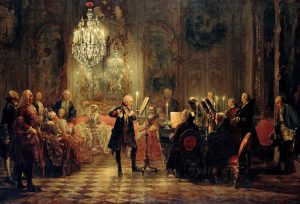
From the development of the orchestra and opera in the Baroque period, the Classical era of music began. This era of music is viewed as a very important milestone in the history of music, primarily because of the timeless masterpieces by composers such as Mozart and Beethoven. These composers began refining music from their symphonies, sonatas and concertos. Unlike the Renaissance era and the Baroque era which contained mostly emotional meaning and the development and skill level of music, the Classical period saw refinements of music with very clear, and balanced harmonies. Public concerts, and major concerts which gained immense popularity in the Classical era and also emerged.
Romantic Music
Reflecting the ever so changing world, the Romantic era of music would shift the focus and meaning of music back to the emotional aspect. With additions in technology, Other aspects continued to prosper, such as further expansion in the orchestra and skill level of performances. One aspect was much different than other eras of music, which was the way that composers and creators started to express themselves in their music, through themes like nationalism, or folk to show their cultural identity.
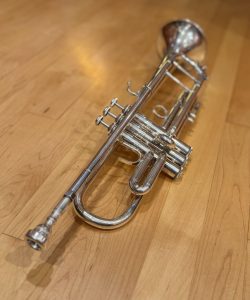
20th Century Modern Music
Music in the 20th century is described by many as the most influential age of music, because of the large-scale changes that were seen in style of music. All throughout the century, new genres were being created and popularized at a rapid pace. Genres like Jazz, Blues, Rock, and even some electronic music were fresh and dominated the music industry. New technologies like the radio played a fundamental role in accessing music. Other new technology also played a giant role in creating new music, such as electronic instruments, and effects contributed to new genres like electronic music. In 20th century music, music also became increasingly globalized, with many musicians and bands like The Beatles, Elvis Presley, and Queen reaching worldwide popularity.
Music Today
Music today is a great mix of everything that it evolved from throughout the years and centuries, and it will continue to evolve. New technologies and strategies for producing music are being developed and discovered quite frequently, streaming platforms like Spotify work for consumers to access music easier than ever before, and music is changing every day. Concerts are booming, genres are merging, and global influence is as large as it has ever been.
As this guide to the history of music comes to a close, I hope that you learned something interesting about the development of music and its changes throughout the years. No matter the current technology, or situation in the world, music will always represent humankind, the difficulties, and the love that we embrace. Music has been a universal language for as long as we can remember, and it continues to shape our world, remaining as a key part of humanity.
The Story of Nyttu Chongo
This video shares the story of Nyttu Chongo, a musician originally from Mozambique. He shares his life experiences including the move from Africa to the United States, talking about how and why he became a musician, and ultimately, how he was able to perform at the Ordway Theatre.
How to play the Shamisen: A tutorial through the basics of one of Japan’s most iconic instruments
The Shamisen, an important symbol in the history and traditions of Japan, is deeply woven into the culture of Japan. The instrument itself is for the most part very beginner friendly and this short guide on how to play the Shamisen will help beginners figure out how to play one of Japan’s most iconic instruments.
1. Structure of the Shamisen
Before learning to play the Shamisen, it’s important to know the structure of the instrument. The Shamisen consists of the following pieces:
- The neck–usually quite long and fretless
- The body–hollow part of the Shamisen that makes the sound
- The strings–3 strings made from nylon or silk
- The pegs–at the top of Shamisen, used for tuning
2. Tuning the Shamisen
The Shamisen can be tuned by adjusting the pegs at the top of the instrument to create tension and change the pitch. Most Shamisen are tuned to “Honchoushi”, which means base tuning. In this format, the strings are tuned to C-F-C, with the 1st and 3rd strings being an octave apart.
3. Holding the Shamisen
To hold the Shamisen, start by sitting down normally or rest on your knees. Your left hand (or right based on preference) should hold the neck of the instrument to be able to change pitch with the strings. The other hand will be holding the Bachi, which is the pick for Shamisen. The Bachi should be held with your thumb, index finger, and middle finger for support.
4. Basic playing strategies
To start playing, take the Bachi and practice hitting the strings at a 45 degree angle to create the best sound. With your other hand, practice moving your fingers across the strings and see how it changes the pitch. The notation for the music is also written differently, so learning resources like videos will also be a great help.
Now that you understand the basics of the Shamisen, next is just to start practicing. The Shamisen is a beautiful yet unique instrument so it’s important to pace yourself, and to start slow.
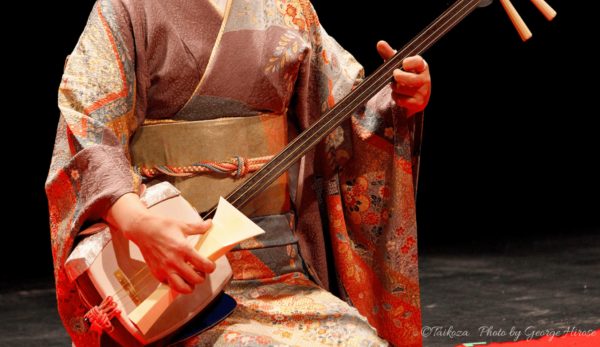
The Experience of Learning the Piano
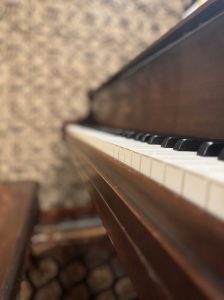
I still vividly remember the first time I learned to play the piano. Being dropped off from my parents on a cold winter day, the road was coated in freshly fallen snow. As I wandered through the snow and to the school doors, a mix of curiosity and excitement began to take hold of me–I was just about to meet Michael, my first piano instructor.
I was only 6, and had no idea how this moment would change my life. As I met Michael for the first time, and I began to get my first feel for the slightly worn wooden and ivory covered keys, I quickly realized that the piano wasn’t just another instrument–it was something special, and something I knew that I wanted to explore.
Over the years, the piano has been my instrument. Learning everything about music alongside my instructor, Michael, my understanding of different genres and music around the world has grown immensely.
It started with just the lesson books that I practice and play in my lessons, which already had a vast expanse of different styles and expressions of music. Ranging from upbeat genres like pop, to the timeless masterpieces from Beethoven and Mozart, and the slower, more emotional blues, each piece in the books opened up a new window in music.
The piano was unique. Found in almost every genre all across the world, my curiosity for what was possible with the piano grew. As much as I enjoyed learning from the lesson books with Michael, I soon found myself starting to learn other pieces that I heard from outside the books.
Most of these other pieces were very different from each other, in terms of their unique rhythms, melodies, stories, and their origin, spanning from every corner of the globe. The more pieces I immersed myself in, the more I discovered about the world of music.
With every new discovery, my passion deepened, and I found myself on many journeys of learning and exploration. These experiences through playing the piano shaped my understanding of music’s power to connect cultures globally.
Infographic about the most popular genres in modern-day music.
A survey was conducted on various people of all ages near Minnetonka, which revealed some of the following genres that were fan-favorites in the vote. Each genre is given a percentage for how many people voted for it, as well as a brief history of each genre.

